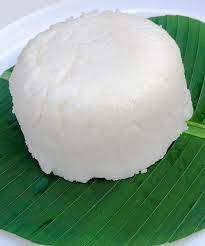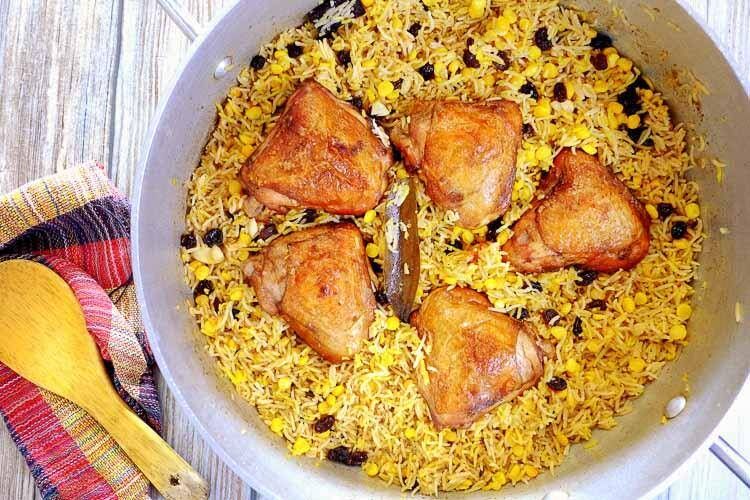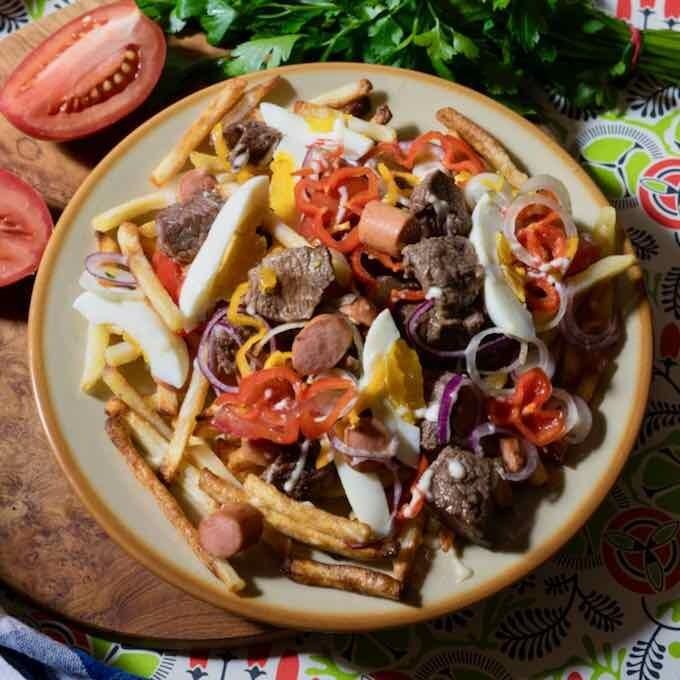Today, we are heading to the beautiful country of Panama to explore the explosive flavors of one of the country’s most popular soups sancocho, also known as sancocho de gallina panameño.
This delicious, economical dish is flavored with chicken, a popular South American herb named culantro, a variety of root vegetables that is high in starch content, that helps to naturally thicken the broth and fresh corn.
Culantro is the flavor you’re going to find in sancocho, even more than the chicken. Not only is it the flavor of Panama, but many other islands and countries in South America.
WHAT IS CULANTRO?
Contrary to popular belief, cilantro is not an alternate spelling of culantro, nor is it the same plant. Though they are in the same botanical family, and have a similar aroma and flavor.
The leaves of the culantro are the desired part for cooking. It is very popular in Caribbean cooking and especially popular in making this sancocho dish in Panama.
In fact, the locals in Panama believe that culantro is the secret weapon for a good sancocho. It is the most distinct of all the tastes that can be discerned within the stew, even more than the chicken, corn, pepper, garlic, oregano and onion.
Panamanian sancocho originated in the Azuero region of the country, and Panamanians swear by eating a bowl of the hot soup for lunch on the hottest days, to help cool off. Sancocho is regarded almost as an elixir of life in Panama.
There are several variations and unique versions of sancocho that can be tasted throughout all of Latin America, but it is beloved most of all in Panama. This delicious stew is a staple for all meals. It invokes friends and family, lively conversations around the table, and happy bellies.
You can eat sancocho year round, but on a chilly day, the satisfying blend of chicken, root vegetables, and corn on the cob hits the spot as a warm, nourishing meal. Everyone loves sancocho, the national comfort food of Panama.
Hot food really cools you off, and heat is one of the many things that Panamanian sancocho is said to remedy. Well, of course, chicken soup is mama’s cure for all ills, worldwide.
In Panama, they also claim it helps to cure a hangover, and that may be true. After all, the local Abuelo rum is cheap.
In any case, no matter where you travel in the world, chicken soup has a reputation for making people feel better, from homemade sancocho to a store-bought can of Campbell’s chicken noodle soup.
WHAT ARE THE DIFFERENT VERSIONS OF SANCOCHO IN PANAMA?
Every sancocho recipe is a little different, depending on the region and the chef. The color and flavor can vary from light brown to bright green to yellow and orange.
While the soup ingredients may vary from household to household or chef to chef, one thing that they have in common is that they are rarely spicy. There are regional differences because of the different root vegetables like the one served in Panama City, which is brown in color.
You are here: Home / Continent / Americas / Latin America / Panama / Sancocho
SANCOCHO
by Nita Ragoonanan 8 Comments
Tweet
Share
84
Pin
568
Email
652SHARES
Panama
sancocho
Subscribe for updates from this site
Subscribe to 196 flavors!
Get updates on the latest posts and more from 196 flavors straight to your inbox.
Your Email…
SUBSCRIBE
By subscribing, I consent to receiving emails.
Today, we are heading to the beautiful country of Panama to explore the explosive flavors of one of the country’s most popular soups sancocho, also known as sancocho de gallina panameño.
What is 196 flavors?
Play Video
This delicious, economical dish is flavored with chicken, a popular South American herb named culantro, a variety of root vegetables that is high in starch content, that helps to naturally thicken the broth and fresh corn.
Culantro is the flavor you’re going to find in sancocho, even more than the chicken. Not only is it the flavor of Panama, but many other islands and countries in South America.
WHAT IS CULANTRO?
Contrary to popular belief, cilantro is not an alternate spelling of culantro, nor is it the same plant. Though they are in the same botanical family, and have a similar aroma and flavor.
RELATED POSTS:
Arroz con bacalao (rice with salt cod)ARROZ CON BACALAO (RICE WITH SALT COD)
Hogao (Criollo Sauce)HOGAO (CRIOLLO SAUCE)
Sopa de CaracolSOPA DE CARACOL
Olla de CarneOLLA DE CARNE
Ensalada Chilena (Chilean Salad)ENSALADA CHILENA (CHILEAN SALAD)
Sonso de YucaSONSO DE YUCA
The leaves of the culantro are the desired part for cooking. It is very popular in Caribbean cooking and especially popular in making this sancocho dish in Panama.
In fact, the locals in Panama believe that culantro is the secret weapon for a good sancocho. It is the most distinct of all the tastes that can be discerned within the stew, even more than the chicken, corn, pepper, garlic, oregano and onion.
Panamanian sancocho originated in the Azuero region of the country, and Panamanians swear by eating a bowl of the hot soup for lunch on the hottest days, to help cool off. Sancocho is regarded almost as an elixir of life in Panama.
There are several variations and unique versions of sancocho that can be tasted throughout all of Latin America, but it is beloved most of all in Panama. This delicious stew is a staple for all meals. It invokes friends and family, lively conversations around the table, and happy bellies.
You can eat sancocho year round, but on a chilly day, the satisfying blend of chicken, root vegetables, and corn on the cob hits the spot as a warm, nourishing meal. Everyone loves sancocho, the national comfort food of Panama.
Hot food really cools you off, and heat is one of the many things that Panamanian sancocho is said to remedy. Well, of course, chicken soup is mama’s cure for all ills, worldwide.
In Panama, they also claim it helps to cure a hangover, and that may be true. After all, the local Abuelo rum is cheap.
In any case, no matter where you travel in the world, chicken soup has a reputation for making people feel better, from homemade sancocho to a store-bought can of Campbell’s chicken noodle soup.
WHAT ARE THE DIFFERENT VERSIONS OF SANCOCHO IN PANAMA?
Every sancocho recipe is a little different, depending on the region and the chef. The color and flavor can vary from light brown to bright green to yellow and orange.
While the soup ingredients may vary from household to household or chef to chef, one thing that they have in common is that they are rarely spicy. There are regional differences because of the different root vegetables like the one served in Panama City, which is brown in color.
Soups that are heavy with squash, pumpkin or yellow yams also known as sweet potatoes would be more yellow in color. A lot of the locals are known to cook their sancocho over an open fire creating a smokiness to their broth that is simply divine.
The only spicy version of sancocho is made on the outside of Panama City, in the town of La Chorrera. Named after the town, sancocho chorrerano is made with only chicken, onions, garlic, oregano, yams and of course hot peppers.
Ingredients
1 chicken (about 4 lb/2kg), cut into pieces
500 g cassava , peeled and cut into pieces
1.5 kg yam (or sweet potato), peeled and cut into pieces
2 ears of corn , each cut in 3
1 small bunch culantro (or cilantro) , chopped
1 large onion , chopped
1 green bell pepper , cut into small cubes
4 cloves garlic , chopped
2 tablespoons oregano
Salt
Instructions
Place the chicken in a pot and cover with water.
Cook over high heat for 5 minutes after boiling.
Reduce heat and add yams, corn, and cassava. Cook over low heat for 45 minutes.
Add the onion, bell pepper, cilantro, garlic, salt, and 1 teaspoon oregano.
Cook 15 minutes more.
Turn off the heat and add the remaining oregano. Cover and wait 10 minutes before serving.
Serve the sancocho with white rice.
If you’ve never tried it please make sure to ask for it when you travel to Panama
spotted in www.196flavors.com





















